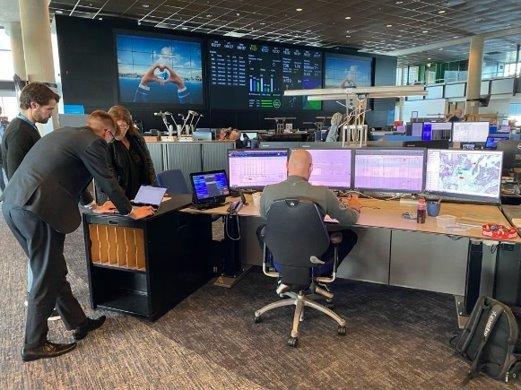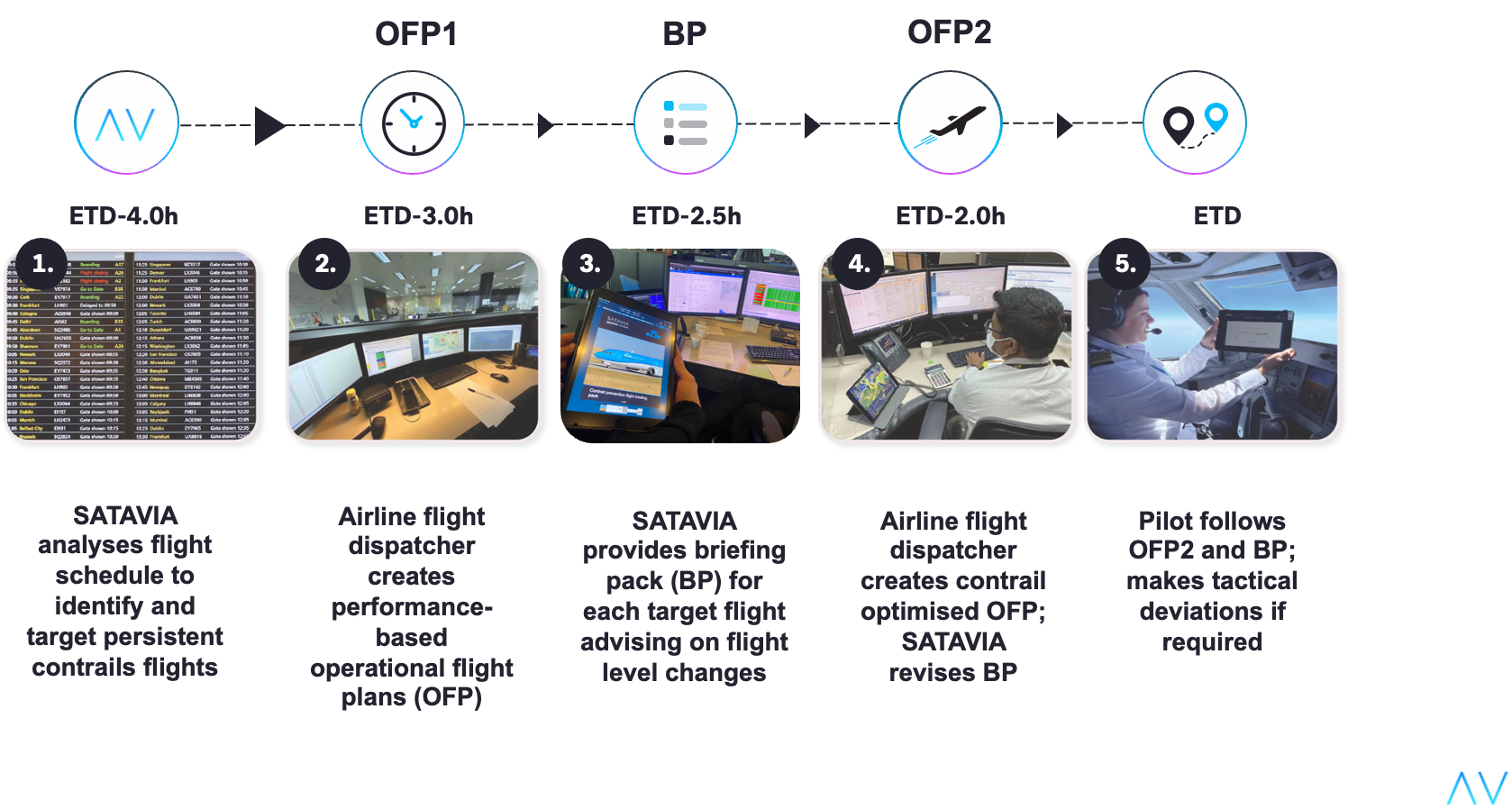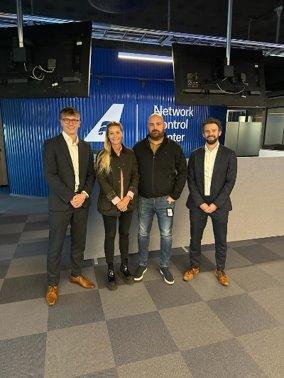
Objectives of the service
In addition to the climate warming from around 1 billion tonnes of CO2 emissions each year, aviation also has additional “non-CO2” climate warming impact from contrail clouds, nitrous oxides and soot emissions. Globally, contrails cause a climate impact that increases the aviation sector’s CO2 climate footprint by more than a third. With rising public awareness and upcoming monitoring, reporting and verification (MRV) requirements under the European Union Emissions Trading Scheme (EU ETS), there is a growing need for aircraft operators to quantify and mitigate their contrail climate impact.
SATAVIA’s DECISIONX:NETZERO technology is based on numerical weather prediction (NWP) modelling, enabling the provision of atmospheric intelligence to change flight plans for the avoidance of warming contrail conditions. The mitigated climate impact is verified by SATAVIA and converted into tradable units by a patented method with the backing of Gold Standard, a major carbon accreditation platform.
SATAVIA’s contrail management service enables aircraft operators to:
-
Quantify and report non-CO2 climate impact
-
Create climate-optimised flight plans to manage the warming impact from persistent contrails
-
Claim a credits-based incentive in response to doing contrails management.

Users and their needs
The principal user community for this service is commercial aircraft operators, with a particular focus on European and Middle East regions. Commercial operators face the following problems and needs:
Problem:
-
Non-CO2 climate warming caused by aircraft contrails raises the overall radiative impact of aviation by more than a third
-
Upcoming non-CO2 MRV requirements under European Union Emissions Trading Scheme (EU ETS) from 2025
Need:
-
Non-CO2 impact quantification to support MRV requirements
-
Operational mitigation of climate impact through contrail management
-
An incentive to drive adoption of contrail management.


Service/ system concept
SATAVIA’s DECISIONX:NETZERO service has multiple components:
-
Flight schedule analysis to identify target flights for climate optimisation
-
Flight plan optimisation to reduce non-CO2 climate impact
-
Post-flight analysis to verify avoided climate impact
-
Creation and assignment of Gold Standard Certified Mitigation Outcome Units

SATAVIA performs proprietary NWP modelling to generate validated water vapour forecasts and identify ice supersaturated regions (ISSR) that lead to persistent warming contrails. The output from the NWP model provides input to a trajectory-based contrail radiative impact model to estimate climate impact on a per flight basis. In the initial step, SATAVIA analyses the airline schedule to create a list of target flights for contrail management. As the airline generates baseline performance optimised flight plans, SATAVIA analyses these and provides guidance back to flight dispatch to enable climate optimisation and generation of a new flight plan. The pilot follows the climate optimised flight plan which is designed to avoid the formation of persistent warming contrails while minimising fuel burn and CO2 emissions.
After the flight has taken place, SATAVIA analyses flown trajectories to quantify contrail radiative impact and compares against the original performance-based baseline flight plan to determine the avoided climate impact in terms of CO2 equivalent. In sector stakeholders can then trade and retire these voluntary carbon market credits against net zero Scope 1 and Scope 3 claims.
Space Added Value
Space assets involved include Earth Observation (EO) assets such as Meteosat and Sentinel satellites (which provide input data for NWP modelling), GNSS satellites for aircraft location, and telecommunications satellites for aircraft tracking. SATAVIA utilised the Spire commercial smallsat constellation for aircraft location data via ADS-B transmitted data.
Current Status
SATAVIA has now successfully completed the DECISIONX:NETZERO CCN activity following demonstrations with 12 commercial airline operators. Throughout the project, SATAVIA collected KPIs to assess success of climate mitigation and operational metrics related to implementation of contrail management within day-to-day flight operations.
Project activity under DECISIONX:NETZERO supported SATAVIA’s carbon accreditation process, including the generation of scientific validation data and flight operations experience needed to assess future scaling of the service.
Summary of conclusions from the DECISION:NETZERO project:
Flights analysed:
-
SATAVIA’s flight selection system (using past ADS-B data) recommended that 445 flights hit a 10 tonne climate impact threshold for modification.
-
Only 147 of those flights required modification when assessing the filed flight plan
-
This highlighted the need for analysis of all filed flight plans to recommend on a per-flight basis across all flights, vs ADS-B past trajectory analysis which was implemented as an interim solution.
-
SATAVIA is now working on an automated solution to integrate with airline flight planning services to analyse all flight plans on a given day.
Success rate:
-
Success rate for CO2e reduction (once selected) i.e. implemented with climate saving: 44%. 65 flights were modified for contrail management overall; 51 pre-tactical (implemented by flight dispatch) and 14 tactical (pilot implementation via electronic flight bag).
-
SATAVIA’s approach to contrail management through the use of briefing packages can be implemented both pre-tactically and tactically, without the need to first create contrails for satellite imagery-assisted deviations around ice supersaturated regions.

Operational challenges:
The DECISIONX:NETZERO trial displayed the value of operational experience as opposed to ‘dry-run’ simulations.
-
Some flights were not implemented by flight dispatch for varied reasons, including ATC restrictions, aircraft performance restrictions, and time and resource challenges surrounding the flight planning process. A prominent issue during the trial period was ATC strikes, demonstrating that there may be upper limits to % success of implementation given events outside stakeholder control.
SATAVIA will now gather more granular information on operational constraints of contrail management via additional feedback from stakeholders including pilots and dispatchers.
Climate benefit:
-
The DECISIONX:NETZERO project achieved an average 43.6T CO2e saving (GWP100) per flight.
-
The largest single flight saving was 251T.
-
There is potential for significant climate saving at scale with limited associated cost in comparison to other sustainability initiatives currently in development within the aviation sector.
-
It was clear at the conclusion of the project that seasonality has a significant impact on the longevity and impact of persistent contrails. Flights taking place in November had greatest CO2e benefits and numbers of flights optimised, showing higher incidence in winter.
-
In general, flights that traversed oceanic airspace were often more impactful (e.g. oceanic flights average of 78.6T vs ~10T for flights taking place mostly over mainland Europe). However, further trials are needed in diverse settings to generate climatologies.
Fuel burn:
-
Average fuel burn delta of ~0.8% per flight, which includes a range of flight lengths, aircraft types and spans across different seasons.
-
The greatest fuel impact (as a % of the total fuel burn) was observed on short haul flights.
-
The average fuel impact, as a % of the total fuel burn, was much lower on medium (3-6hrs) and long (>6hrs) haul flights.
-
Further research is required to understand the precise trade-off at scale for contrail management on short/medium/long haul flights.
Flight time:
Across all flights analysed, there was a negligible impact on flight time, showing operational acceptability of contrail management from a block time and scheduling perspective.


Next steps:
SATAVIA has entered into a multi-year commercial agreement with Etihad Airways, following proof of concept engagements with Etihad, KLM and KLM Cityhopper to trial DECISIONX:NETZERO within commercial operations. SATAVIA is now focused on developing further technical innovations to seamlessly integrate contrail management into flight operations and generate carbon market incentives for operators with the aim of reducing the non-CO2 impact of flying.




